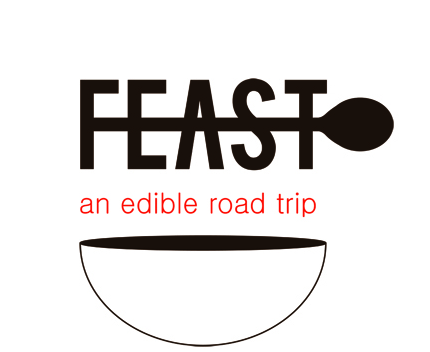The Other Poutine
The foods we’ve eaten on this trip have nourished us, introduced us to people, and perhaps most importantly, educated us. Poutines râpées, for example, were our gateway into the Acadian culture.
Acadians descended from the 17th century French colonists who settled in various parts of what is now New Brunswick and Nova Scotia. They developed a unique relationship with the Mi’kmaq First Nations, and came to identify themselves firstly as Acadians, secondly as French.
In the wars that followed, they chose to remain neutral rather than pledge allegiance to the British crown, and therefore, despite being a prosperous and peaceful community, were eventually expelled by the British. Many made their way to the French colony of Louisiana, where they became known as ‘Cajuns,’ while some managed to hide, or make their way back to the east coast. Today, Acadian culture is once again firmly embedded in the land, language and, of course, the food of this region.
We had the great privilege of being invited to the home of Mrs. Claira Vautour in Saint-Louis de Kent to learn how to make poutines râpées, a traditional Acadian dish. Her daughter, Camilla, works for Parks Canada at Kouchibouguac National Park (you can imagine the hilarity as we struggled, and still struggle, to pronounce 'koo-ji-buh-quack'). She generously arranged the whole afternoon.
Claira comes from a huge Acadian family, and grew up helping her mother cook for her five sisters and eleven brothers. ELEVEN BROTHERS. She barely believed me when I told her I only have one first cousin; it was simply unbelievable for her to conceive of, considering the size of her own clan.
Onto the cooking. If you think, as we did, that ‘poutine’ refers strictly to fries with cheese curds and gravy, you are wrong. Poutines râpées is an Acadian dish eaten at Christmas and/or special occasions, and besides the fact it also includes potatoes, it has little to do with its Quebecois namesake.
The dish only has three ingredients – potatoes, salt, and salt pork – and, according to Claira, was probably borne out of the desire to find new ways of preparing meat and potatoes. Poutines râpées’ origins are likely northern France (perhaps Alsace?), but their exact origin is unknown.
They’re like large dumplings, and making them is a long and physical process. First, pounds of potatoes are peeled, then half are cooked and mashed, while the others remain raw and are grated.
Laboriously, the grating used to be done by hand, but Claira was thrilled to show us her much speedier electric grater, built especially for this task. She’s known in the community as a master of poutines râpées, often taking orders for large batches at holidays.
The grated fresh potatoes are put into clean cotton bags, and squeezed to get the starchy juice out. It’s a tiring job, and I guarantee you Claira’s hands and forearms are stronger than mine.
Both the cooked and raw potatoes are put onto the clean kitchen table, mixed with salt, and ‘kneaded’ to make a kind of flourless dough.
Next they’re filled with chopped salt pork that’s been cubed and rinsed. Claira taught us how to take a baseball-sized chunk of dough, and pat it out into a thick circle on the palm of our hands. A small handful of salted pork was placed at its center, and ever so carefully we worked the sides up, sealing them together at the top.
Then we watched as Claira rocked the dumplings back and forth in her hands, quickly and deftly, to ‘seal’ the pork in and firm up the potato.
When all the poutines were rolled, we put them into a large pot of boiling water, and went to explore Kouchibouguac for several hours while they cooked. It’s a stunning stretch of land along the coast, with its own very complex history of resettlement.
It was a wild and beautiful coastline. Windy, too, as you can see by the devil horns I've been given.
Eventually we made our way back to the Vautour household, where Claira had set the table for us to enjoy our meal.
Poutines râpées are typically eaten plain, with just a sprinkling of pepper, white sugar, or brown sugar. Sometimes molasses. Yes, that’s right, the Acadians were onto this whole sweet/savoury combo long before the rest of us.
The poutines were wonderful; the potato took on a very glutinous texture that reminded me of sticky rice, and it absorbed much of the salty flavour of the pork. They were an instant comfort food hit, and I found it truly remarkable what could be done with just three ingredients, one of them salt.
We cannot express to Camilla and Claira how much we appreciated this experience. Thank you so much for having us, and for introducing us to this truly unique Canadian food!
-LA














